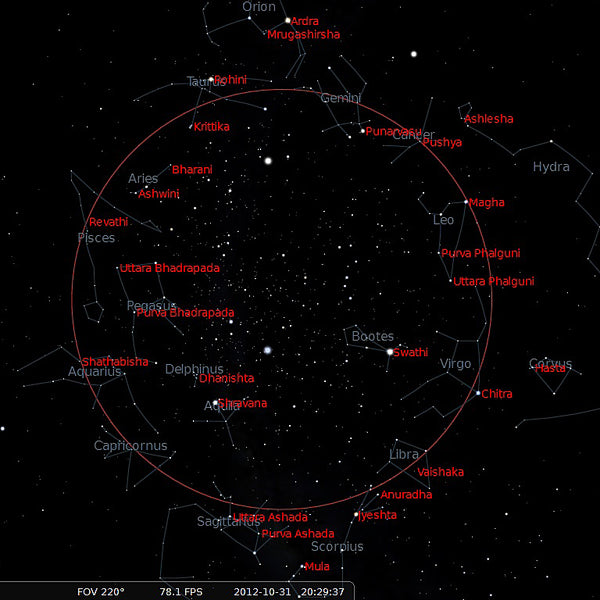The Nakshatras

One of the features of Vedic Astrology, which distinguishes it from other forms of astrology, is its use of the twenty-seven nakshatras or constellations. In the West, the zodiac is usually divided into twelve signs. In India, besides dividing the zodiac into twelve signs, it is also divided into twenty-seven constellations or nakshatras.
Each nakshatra has a basic style of energy called its shakti. The shakti of the nakshatra is its fundamental nature, which the astrologer also uses to predict the influence of the nakshatra on any planet placed there. The shaktis of the nakshatras go back to the Taitiriya Brahamana, one of the oldest astrological works on earth.
Each of these nakshatras is also related to a particular deity from the Hindu pantheon and shares in that deity's symbolism and mythology. These symbols provide the astrologer with a rich background from which to draw intricate detail and deeper meaning from the chart. In this regard, it is not uncommon for a Vedic Astrologer to tell the client a story from the puranas, the classical mythology of India. When this happens during a reading, he is usually telling a story which is linked to the deity of a focal nakshatra in the client's chart. Sometimes the client will actually play out the elements of the story, verbatim. Other times the story symbolizes events in the client's life. In either case, the storytelling aspect of Jyotish adds an element to the reading which makes it more rich and complete.
 James' assistant's name is Nicole, and she is the one who makes the appointments. She can be reached by phone at 530-265-8410 or email at james@jameskelleher.com. If Nicole is not available by phone, please leave a message. Be sure to leave your phone number, the best time to be reached and your email address.
James' assistant's name is Nicole, and she is the one who makes the appointments. She can be reached by phone at 530-265-8410 or email at james@jameskelleher.com. If Nicole is not available by phone, please leave a message. Be sure to leave your phone number, the best time to be reached and your email address.